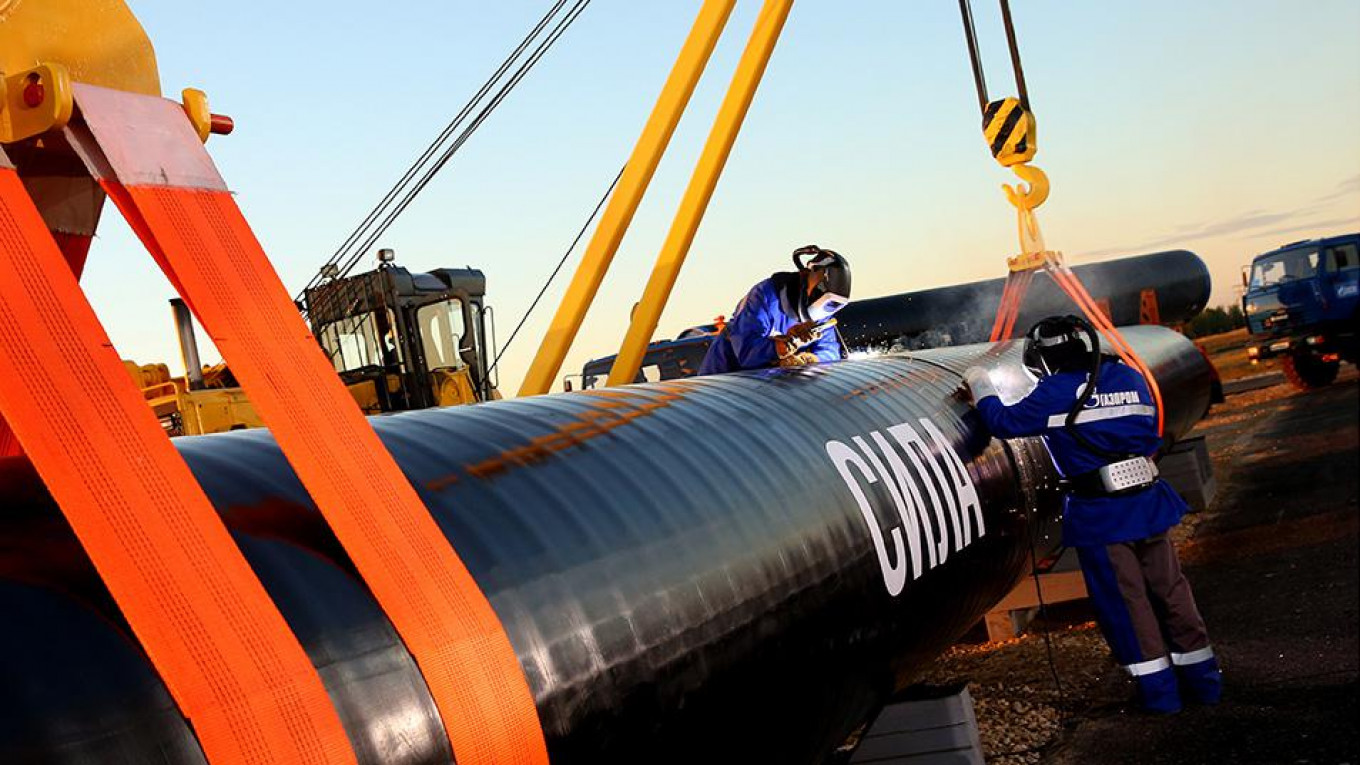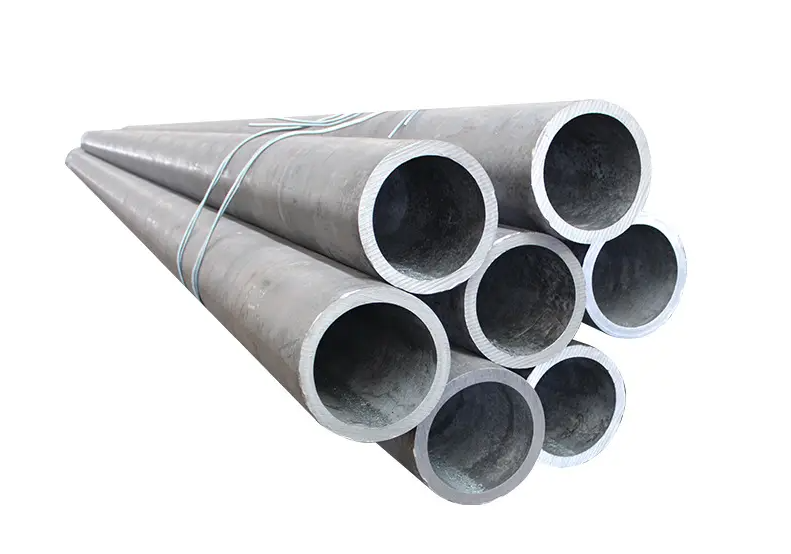Steel Pipes for Chemical Fertilizer

Scientific Analysis of Steel Pipes for Chemical Fertilizer Applications
Material Composition and Manufacturing Process
Seamless steel pipes for chemical fertilizer applications are primarily made from high-quality carbon structural steel (e.g., grades 10, 20, 16Mn) and alloy steels (e.g., 12CrMo, 15CrMo, 12Cr2Mo), designed to withstand high-pressure (10-30 MPa) and corrosive environments with operating temperatures from -40°C to 400°C, per standards like GB/T 6479-2013, ASTM A335, and EN 10216-2. Carbon steel grades (C ≤0.20%, Mn ≤1.70%) provide cost-effective strength (yield strength 235-355 MPa), while alloy steels, with chromium (0.7-2.6%) and molybdenum (0.25-1.0%), enhance corrosion resistance and creep strength. Manufacturing involves hot-rolling or cold-drawing solid billets, ensuring seamless pipes with outer diameters (OD) from 10 mm to 530 mm, wall thicknesses (WT) from 1.5 mm to 50 mm, and lengths up to 12 m. Hot-rolling at 900-1200°C forms a uniform ferrite-pearlite structure, while cold-drawing refines grain size, improving surface finish and dimensional tolerance (±1% OD, ±12.5% WT). These pipes are used in fertilizer production for conveying ammonia, urea, methanol, and acids like sulfuric and phosphoric, requiring superior resistance to corrosive gases and liquids.
Corrosion Resistance and Environmental Challenges
Chemical fertilizer plants produce aggressive substances, such as sulfuric acid (H₂SO₄) during ammonium sulfate production and phosphoric acid (H₃PO₄) for ammonium phosphate, leading to corrosion rates of 0.5-2 mm/year in unprotected carbon steel pipes. Alloy steels, with Cr and Mo, form a protective Cr₂O₃ layer, reducing corrosion to <0.1 mm/year in acidic environments (pH 2-4, 100 ppm Cl⁻). Stainless steel grades like 316L (16-18% Cr, 10-14% Ni, 2-3% Mo) or duplex UNS S31803 (22% Cr, 5-6% Ni) are increasingly used for enhanced resistance to chlorides and hydrochloric acid, achieving corrosion rates <0.05 mm/year, per ASTM A312 and A789. Internal coatings, such as fusion-bonded epoxy (FBE, 200-400 μm, AWWA C213), and external coatings (e.g., three-layer polyolefin) further mitigate corrosion, extending service life to 30-40 years. Cathodic protection (-850 mV vs. Cu/CuSO₄) and corrosion inhibitors (e.g., phosphates) are critical in high-chloride or H₂S-rich environments. Pipe reactor systems, using 316 stainless steel (e.g., 6” OD, SCH 80), handle high-temperature (600-650°C) reactions with superphosphoric acid and ammonia, forming polyphosphates with minimal scaling.
Mechanical Performance and Application Suitability
Seamless steel pipes for fertilizer applications must endure high pressures (10-30 MPa) and thermal cycling (-40°C to 400°C). Carbon steel grades like 20 (tensile strength 410 MPa, yield 235 MPa) suit low-cost, low-pressure systems, while alloy grades like 15CrMo (tensile strength 440 MPa, yield 295 MPa) handle higher pressures and temperatures, per GB/T 6479. Seamless pipes offer 20% higher pressure capacity than welded due to uniform microstructure, critical for reactors, heat exchangers, and pipelines conveying ammonia or methanol. Delivery conditions, such as normalizing (900-930°C) for 20# or normalizing plus tempering (670-720°C) for 12CrMo, enhance creep resistance and toughness (Charpy impact ≥27 J at 20°C). Duplex stainless steels (e.g., S31803, yield strength 450 MPa) provide double the strength of austenitic 304, ideal for high-stress fluid transfer in fertilizer plants, with annual consumption of 8,000-10,000 tons in China. End finishes (plain, beveled, threaded) and seaworthy packing ensure versatile installation, with delivery within 15-30 days. Applications include chemical reactors, heat exchangers, and piping for corrosive media.
Dimension Range and Standards
| Application | OD Range | WT Range | Length Range | Standards |
|---|---|---|---|---|
| Chemical Reactors | 10-530 mm | 1.5-50 mm | 5-12 m | GB/T 6479, ASTM A335, EN 10216-2 |
| Heat Exchangers | 1/2” – 12” | SCH 40, 80, 160 | Up to 12 m | ASTM A213, A312, DIN 17456 |
| Fluid Pipelines | 1/8” – 24” | SCH 40, 80, XXS | Up to 12 m | ASTM A789, GB/T 14976, GOST 9941 |
| Fertilizer Equipment | 10-426 mm | 1.5-26 mm | 5-12 m | GB/T 6479, ASTM A106, EN 10216-2 |
Chemical Composition and Mechanical Properties
| Standard | Grade | C (%) | Si (%) | Mn (%) | P (%) | S (%) | Cr (%) | Mo (%) | Tensile Strength (min MPa) | Yield Strength (min MPa) | Elongation (%) |
|---|---|---|---|---|---|---|---|---|---|---|---|
| GB/T 6479 | 20 | 0.17-0.23 | 0.17-0.37 | 0.35-0.65 | ≤0.035 | ≤0.035 | – | – | 410 | 235 | ≥25 |
| GB/T 6479 | 16Mn | 0.12-0.20 | 0.20-0.60 | 1.20-1.60 | ≤0.030 | ≤0.030 | – | – | 490 | 325 | ≥21 |
| GB/T 6479 | 12CrMo | 0.08-0.15 | 0.17-0.37 | 0.40-0.70 | ≤0.035 | ≤0.035 | 0.40-0.70 | 0.40-0.55 | 410 | 205 | ≥22 |
| ASTM A335 | P11 | 0.05-0.15 | 0.50-1.00 | 0.30-0.60 | ≤0.025 | ≤0.025 | 1.00-1.50 | 0.44-0.65 | 415 | 205 | ≥30 |
| ASTM A312 | TP316L | ≤0.035 | ≤1.00 | ≤2.00 | ≤0.045 | ≤0.03 | 16.0-18.0 | 2.0-3.0 | 485 | 170 | ≥35 |
| ASTM A789 | S31803 | ≤0.03 | ≤1.00 | ≤2.00 | ≤0.03 | ≤0.02 | 21.0-23.0 | 2.5-3.5 | 620 | 450 | ≥25 |
Extended Scientific Analysis of Steel Pipes for Chemical Fertilizer Applications
Microstructural Design and Alloy Performance
Seamless steel pipes for chemical fertilizer applications are engineered with precise microstructural control to withstand corrosive and high-pressure conditions. Carbon structural steel grades like 20 (C 0.17-0.23%, Mn 0.35-0.65%) and 16Mn (C 0.12-0.20%, Mn 1.20-1.60%) form a ferrite-pearlite matrix, offering tensile strengths of 410-490 MPa and yield strengths of 235-325 MPa, per GB/T 6479-2013. Alloy steels like 12CrMo (0.40-0.70% Cr, 0.40-0.55% Mo) and 15CrMo (0.80-1.10% Cr, 0.40-0.55% Mo) incorporate chromium and molybdenum to form carbides (Cr₇C₃, Mo₂C), enhancing creep resistance at 400-550°C and corrosion resistance in acidic environments (pH 2-4). Seamless manufacturing via hot-rolling (900-1200°C) or cold-drawing refines grain size to 10-20 μm, boosting toughness (Charpy impact ≥27 J at 20°C). Cold-drawing increases dislocation density, improving hardness, while normalizing (900-930°C) or tempering (670-720°C) minimizes residual stresses, per ASTM A335 and EN 10216-2. Duplex stainless steels like UNS S31803 (21-23% Cr, 2.5-3.5% Mo) offer a dual-phase austenite-ferrite structure, doubling yield strength (450 MPa) for high-pressure ammonia or urea pipelines. These pipes, with ODs from 10-530 mm and WTs from 1.5-50 mm, are critical for fertilizer reactors and heat exchangers.
Corrosion Mechanisms and Protective Strategies
Chemical fertilizer production exposes pipes to aggressive media, including sulfuric acid (H₂SO₄), phosphoric acid (H₃PO₄), and ammonia (NH₃), with corrosion rates in carbon steel reaching 1-3 mm/year in 10% H₂SO₄ at 50°C. Alloy steels like 12CrMo reduce this to <0.15 mm/year due to Cr₂O₃ passivation, while stainless steels like TP316L (2-3% Mo) achieve <0.05 mm/year in chloride-rich environments (500 ppm Cl⁻), per ASTM G48. Microbial-induced corrosion (MIC) from sulfate-reducing bacteria (SRB) in phosphate processing produces H₂S, accelerating pitting. Internal linings, such as fusion-bonded epoxy (FBE, 200-400 μm, AWWA C213), or three-layer polyethylene (3LPE) coatings reduce corrosion rates to <0.03 mm/year. Cathodic protection (-850 mV vs. Cu/CuSO₄) and inhibitors (e.g., sodium polyphosphate) neutralize acidic conditions, extending service life to 40+ years. Welded joints, prone to sensitization in stainless grades, require post-weld annealing to restore corrosion resistance. Future strategies include graphene-based coatings and AI-driven corrosion monitoring to optimize maintenance in fertilizer plants handling methanol, urea, or acids.
Mechanical Integrity and System Optimization
Seamless steel pipes for fertilizer applications must endure high-pressure (10-30 MPa) and thermal cycling (-40°C to 400°C) in reactors, pipelines, and heat exchangers. Alloy grades like ASTM A335 P11 (tensile strength 415 MPa) suit medium-pressure systems, while duplex S31803 (620 MPa) handles high-pressure ammonia synthesis, per ASTM A789. Seamless pipes offer 20-25% higher burst strength than welded due to uniform microstructure, critical for pipe reactors processing superphosphoric acid (80-85% P₂O₅) at 600-650°C. Delivery conditions, such as normalizing plus tempering, enhance creep life (e.g., 100,000 hours at 550°C for 15CrMo). End finishes (plain, beveled, threaded) and seaworthy packing (bundled or bulk) ensure installation flexibility, with delivery within 15-30 days. Challenges include thermal fatigue in cyclic operations, mitigated by thick walls (SCH 80-XXS) and low sulfur (≤0.035%) to prevent cracking. Future advancements involve automated welding for joint integrity, real-time pressure sensors, and lightweight alloys to reduce costs while maintaining strength for fertilizer production systems.







